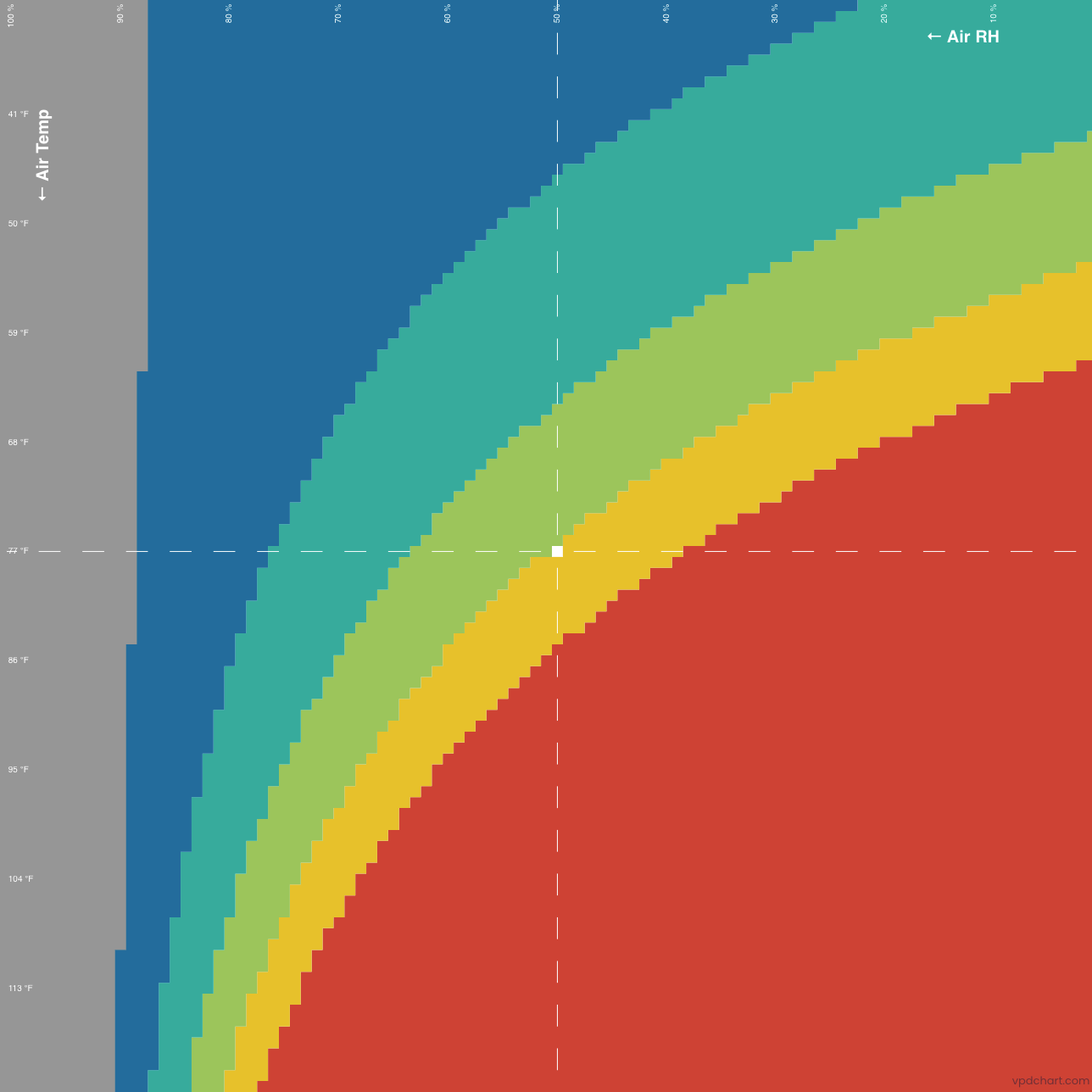Increasing air temp increases VPD when RH & CTD (canopy temperature depression) are maintained, but RH actually
decreases as ambient rises, which further exacerbates the increase in VPD. When people are increasing ambient to offset low LST, they are most likely increasing the VPD.
Is the desired effect from an increase in VPD, or LST, or both?
HID give off IR that warms plants more than LED. This means that HID grown plants have higher VPD than LED plants (for a given RH and air temp). This means that HID supposedly need even greater RH %'s than LEDs do in order to maintain a proper VPD (for a given air temp). Is this what is observed in practice?
Is the suggestion to increase ambient a round about way of increasing VPD to more similar values noticed under HID grows? I'm assuming RH isn't much greater in HID grows than LED grows, and if it truly is that most HID grows and most LED grows have similar RHs then it would mean that on average HID have greater VPD than LED. This brings me to the question of, what is truly being achieved when air temp is increased in LED grows? Is the noticed difference in growth due to increased VPD? When people are trying to increase their RH when growing with LED, are they actually countering the ultimate effect that the increase in air temp achieves (increasing VPD)? Can decreasing RH be just as effective as increasing air temp? Or, is it LST that is the driving catalyst? Is it that VPD needs less monitoring and that its more about overall LST?
I'm not sure what to conclude.
Vapor pressure deficit (VPD) chart & calculator for horticulture in controlled environment. Cannabis, tomatoes, leafy greens, cucumber.

vpdchart.com
Effects of Different Artificial Grow Lighting Technologies on Leaf Surface Temperature Table of Contents Abstract FLIR Image of a BD240-U Introduction Why does Leaf Surface Temperature (LST) Matter? What is the Ideal Leaf Surface Temperature? What Affects Leaf Surface Temperature? The Evidence...

www.blackdogled.com
I will say that LEDs between 800-900nm won't be very effective at changing LST. They do have some decently efficient emitters within that range (~50%), but much of the emission is reflected by the leaves and it's not till about 1400nm you get decent absorption by water and really 1900nm is what you'd want to target ideally imo.
QTH (Quartz Tungsten Halide) lamps are estimated to be about 85% efficient at about 1900K CCT (can get up to 95% efficient at higher CCT), which is close to what you'd most likely want to source if you were after a targeted increase in LST. I haven't found any though to purchase realistically (Thor Labs has some interesting spectrums but seems mostly made for instrumentation and very $$). There may be use for a device to increase LST, but LST might not be the ultimate goal and there may be other more efficient ways of achieving desired growth than this. I honestly don't know, just throwing some thoughts around out there in the ether..








